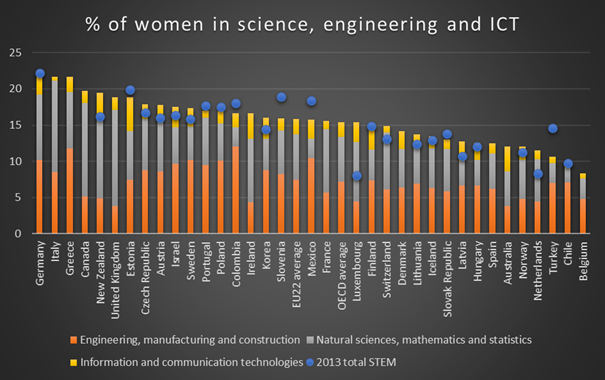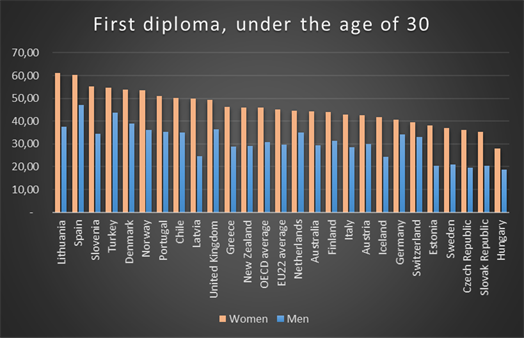Girls in STEM: much more common in other countries
Every year, the OECD surveys the differences between the education systems in its member countries, from primary schools to universities.
The implicit message is that things can always be done differently: in some countries students pay more, in others less. The number of young people who enter higher education also varies from one country to the next, as does government investments in education.
Since the researchers collect data from around the globe, the report is always a couple of years out of date and does not reflect the effects of recent policy.
Women
For example, the figures relating to women in science and engineering date from 2019. They are, however, interesting. For many years, the Netherlands has been doing its best to awaken the interest of female students for STEM programmes, with special recruitment campaigns specifically targeted at girls. One of these campaigns is called Girls’ Day.
These efforts seem to have had some effect: in 2013, 8.3 percent of female students entered a STEM programme in the Netherlands. Six years later, the figure rose to 11.5 percent. Nevertheless, the Netherlands is still virtually at the bottom of the list.
Only in Turkey, Chile and Belgium do fewer girls go into STEM. It should be noted, however, that in 2013 Turkey was still far ahead of the Netherlands.

© HOP. Source: OCDE, Education at a Glance 2021. Dots mean the position in 2013.
But other differences stand out as well. In the Netherlands, for example, 94 percent of first-year higher education students are younger than 25, with no significant difference between men and women. Only Belgium and Japan exceed that figure. In Denmark, Sweden and Switzerland, on the other hand, the figure is less than 75 percent. In Israel, there is a remarkable difference between men and women.
 © HOP. Source: OCDE, Education at a Glance 2021
© HOP. Source: OCDE, Education at a Glance 2021
As to be expected, the report's authors also tried to take the consequences of the coronavirus pandemic into account. To do so, they calculated how many days of classes were lost (those were relatively few in the Netherlands) and looked at the measures taken by the governments.
However, as previously stated, the report is a little out of date. A summary of support measures shows that, unlike most countries, the Netherlands has provided no extra funding for education. The billions under the National Education Programme came just too late for the OECD.
Bearing in mind these shortcomings, the rest of the information is all the more pertinent. What percentage of men and women get their first higher education diploma before they reach the age of 30? Across all OECD countries women tend to graduate before their male peers, but the difference is smaller in the Netherlands.
 © HOP. Source: OCDE, Education at a Glance 2021. International students were excluded from this calculation.
© HOP. Source: OCDE, Education at a Glance 2021. International students were excluded from this calculation.
But what constitutes higher education? In other countries, some of the educational programmes that fall under this category would be classified as vocational training (MBO-4) in the Netherlands. There are also differences in the duration and quality of the programmes.
Goverment expenditure on education is always a sensitive topic, politically. The OECD looks at this as well in the report, but it is even harder to make comparisons in this area. The report shows, for instance, that the Netherlands has increased its budgets for higher education, but that the economy grew more quickly than those investments. So were they sufficient? To a certain degree, the figures are open to interpretation.
But the Dutch Ministry of Education still finds the comparison worthwhile. “Based on the OECD figures, we can conclude that the Dutch system does very well on a variety of indicators, compared to other countries. We can also conclude that improvements are both possible and necessary”, wrote the minister in a memo to the House of Representatives.